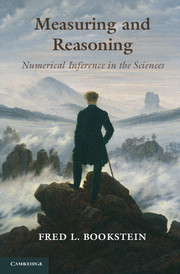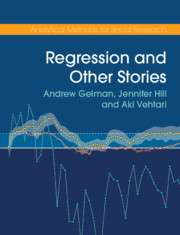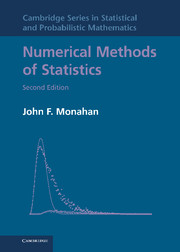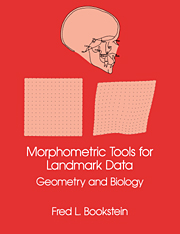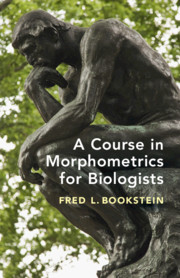Measuring and Reasoning
Numerical Inference in the Sciences
$67.99 (C)
- Author: Fred L. Bookstein, University of Washington and Universität Wien, Austria
- Date Published: February 2014
- availability: Available
- format: Hardback
- isbn: 9781107024151
$
67.99
(C)
Hardback
Other available formats:
eBook
Looking for an examination copy?
If you are interested in the title for your course we can consider offering an examination copy. To register your interest please contact [email protected] providing details of the course you are teaching.
-
In Measuring and Reasoning, Fred L. Bookstein examines the way ordinary arithmetic and numerical patterns are translated into scientific understanding, showing how the process relies on two carefully managed forms of argument: * Abduction: the generation of new hypotheses to accord with findings that were surprising on previous hypotheses, and * Consilience: the confirmation of numerical pattern claims by analogous findings at other levels of measurement. These profound principles include an understanding of the role of arithmetic and, more importantly, of how numerical patterns found in one study can relate to numbers found in others. They are illustrated through numerous classic and contemporary examples arising in disciplines ranging from atomic physics through geosciences to social psychology. The author goes on to teach core techniques of pattern analysis, including regression and correlation, normal distributions, and inference, and shows how these accord with abduction and consilience, first in the simple setting of one dependent variable and then in studies of image data for complex or interdependent systems. More than 200 figures and diagrams illuminate the text. The book can be read with profit by any student of the empirical natural or social sciences and by anyone concerned with how scientists persuade those of us who are not scientists why we should credit the most important claims about scientific facts or theories.
Read more- Includes two hundred pictures and diagrams that convey the essence of the subject matter without requiring any mastery of the underlying theories
- Features dozens of worked examples, many of historical importance, capturing the essence of the most powerful tools for quantitative reasoning across the natural and social sciences
- Explanations of the logic and rhetoric of the bell curve, regression and correlation, and likelihood tests as they drive today's best examples of scientific reasoning
Customer reviews
Not yet reviewed
Be the first to review
Review was not posted due to profanity
×Product details
- Date Published: February 2014
- format: Hardback
- isbn: 9781107024151
- length: 559 pages
- dimensions: 235 x 160 x 34 mm
- weight: 0.89kg
- contains: 180 b/w illus.
- availability: Available
Table of Contents
Part I. The Basic Structure of a Numerical Inference:
1. Getting started
2. Consilience as a rhetorical strategy
3. Abduction and strong inference
Part II. A Sampler of Strategies:
4. The undergraduate course
Part III. Numerical Inference for General Systems:
5. Abduction and consilience in more complicated systems
6. The singular value decomposition: a family of pattern engines for organized systems
7. Morphometrics, and other examples
Part IV. What Is to Be Done?:
8. Retrospect and prospect.
Sorry, this resource is locked
Please register or sign in to request access. If you are having problems accessing these resources please email [email protected]
Register Sign in» Proceed
You are now leaving the Cambridge University Press website. Your eBook purchase and download will be completed by our partner www.ebooks.com. Please see the permission section of the www.ebooks.com catalogue page for details of the print & copy limits on our eBooks.
Continue ×Are you sure you want to delete your account?
This cannot be undone.
Thank you for your feedback which will help us improve our service.
If you requested a response, we will make sure to get back to you shortly.
×
